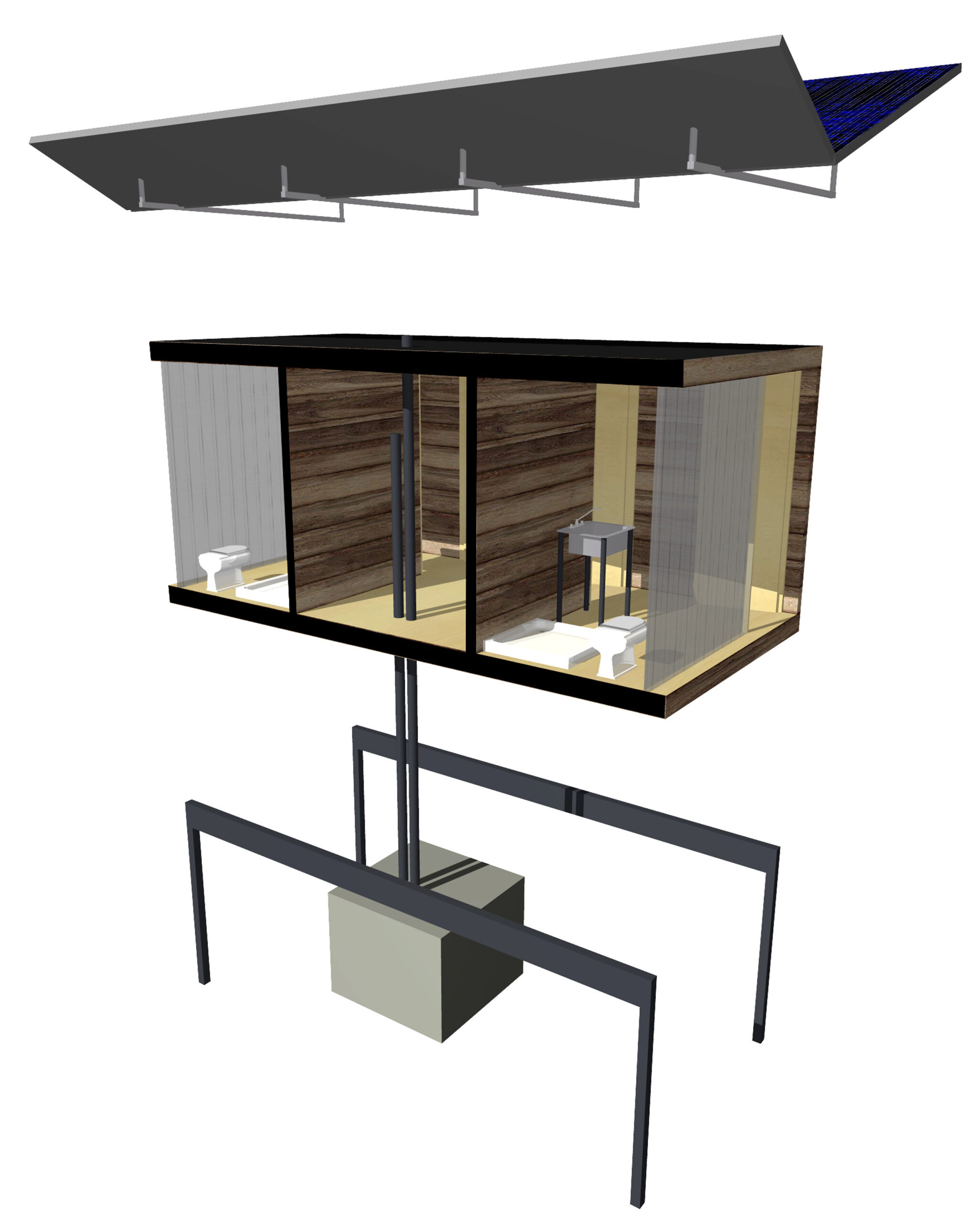


left: Exploded axon of rendered Clean Hub unit showing the rain-collecting roof, body made from polycarbonate panels, adjustable feet for uneven terrain, and water reservior beneath
center: Rendering of the Clean Hub in a disaster settlement
right: Rendering showing the unit deployed over uneven ground, with the water reservoir tapped into a river. All images Shelter Architecture
| Location | Minneapolis, Minnesota, USA |
| Date | 2005 |
| Organization | Architecture for Humanity–Minnesota |
| Design Firm | Shelter Architecture |
| Concept | John Gavin Dwyer |
| Estimated Cost | $15,000 |
| Area | 180 sq. ft./17 sq. m |
| Website | www.afh-mn.org, www.shelterarchitecture.com |
Clean Hub is a compact, manufactured structure that provides sustainable electricity, clean water, toilets, and bathing facilities. Based on a concept by John Dwyer, principal of Shelter Architecture and co-founder of Architecture for Humanity–Minnesota, the structure is self-contained, self-reliant, and intended to serve up to several hundred people for 30 years or more.
The structure’s components include a roof of light-gauge metal for rain collection and 16 photovoltaic panels producing up to 2,640 watts for solar collection. The shell is constructed of polycarbonate panels, and the foundation is set on piers to accommodate uneven ground.
A reverse-osmosis water system is located in the mechanical space and pumps water from a reservoir stored beneath the shell and below grade to regulate the water’s temperature to the showers and sinks. The reservoir can be tapped into an existing water source or fed water and is designed to handle contaminated water or seawater. The current design can produce about 3,500 gallons (13,000 L) of clean water a day with a continuous water source. The showers and sinks return gray water to the reservoir for reuse, and the toilets are waterless and self-composting.
Architecture for Humanity–Minnesota is currently working to develop a prototype of the design. Although it was intended as an all-purpose structure to fi t a wide range of situations, Dwyer says that “given its ability to weave into dense urban fabric, we believe its most effective application is for urban slum upgrading and disaster recovery and rebuilding.”
















READ OR LEAVE A COMMENT